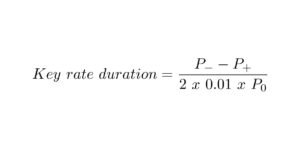Describe the Klinger oscillator.
Stephen Klinger created the Klinger oscillator, which is sensitive enough to identify short-term swings while identifying the long-term pattern of money flow. The indicator turns the data into an oscillator after comparing the volume passing through securities with price fluctuations. The Klinger oscillator displays the variation between two moving averages that have factors other than price as their basis. In order to predict possible price reversals, traders keep an eye out for divergence on the indicator. Adding a signal line can provide additional trade signals, like other oscillators.
Traders will employ instruments like trendlines, moving averages, and other indicators to validate trading signals. To verify a breakout or breakdown, traders can utilize the oscillator with chart patterns like price channels or triangles. The indicator works best when combined with these other technical trading techniques because crossovers and divergences happen often.
Klinger Oscillator Formula Formula
KO=34 Period EMA of VF−55 Period EMA of VF
where:
KO= Klinger Oscillator
VF= Volume Force
Volume Force =V×[2×((dm/cm)−1)]×T×100
V= Volume
T= Trend
Trend=+1 if (H+L+C)>(H−1+L−1+Cv−1)
Trend=−1 if Above is < or =
H= High
L= Low
C= Close
dm=H−L
cm=cm−1+dm if Trend = Trend−1
cm=dm−1+dm if Trend =/= Trend−1
Figuring Out the Klinger Oscillator
- Record the volume during that time and the peak, low, and closing prices.
- By comparing this to the previous period, check if the trend is favorable or negative.
- Use the highs and lows of the current period to calculate DM.
- With the previous cm value and dm, compute cm. Use dm instead of the previous cm value for the initial computation if necessary.
- Determine the volume force (VF).
- Determine the EMAs of VF for the 34 and 55 periods.
For the EMA, Klinger employed the following formula:
EMA=(C×A)+(E×B)
Where:
C Current period’s VF
A= 2/(X+1), where X is the moving average period (34 or 55)
E=Prior period’s EMA
B=1−A
Reasons for Understanding Price Direction
Although calculating the Klinger oscillator can be challenging, it is based on the concept of force volume, which considers temperature, volume, and trend (either positive or negative) (based on many inputs and if/then statements). With this data, the oscillator is constructed by comparing the two exponential moving averages of force volume across different time intervals (usually 34 and 55). The goal is to illustrate how the volume moving through the asset affects both the long- and short-term price direction.
The Channel of Signals
Buy or sell signals are initiated using a signal line, which is a 13-period moving average. This method is similar to signals generated by other indicators, like the moving average convergence divergence (MACD). These are the primary indications that these indicators produce. Still, it’s vital to remember that these methods may produce many trade signals that aren’t always as useful in sideways situations.
The Growth
In an overall uptrend, traders could buy when the Klinger oscillator climbs over the signal line from below, for example, when the asset is above its 100-period moving average and the Klinger oscillator is above zero or going above zero.
According to Klinger, taking a long position was a good idea when a stock was rising and then falling to deficient levels below zero before rising over its signal line.
The Deterioration
If an asset is generally moving downward, traders may choose to short-sell or sell when the Klinger oscillator crosses below the upper signal line. Klinger pointed out that this was particularly significant in light of the indicator’s unusual surge above zero.
Some traders also use the zero line to indicate the change from an upward to a downward trend or vice versa. Although these indications don’t always align with price changes, a climb above zero indicates a rising price, and a dip below zero indicates a falling price.
Divergence and Klinger Oscillator
When the indicator’s inputs fail to validate the direction of the price move, the Klinger oscillator additionally employs divergence to detect this situation. This is a positive indication when the indicator’s value rises and the security’s price still declines. When the indicator is down, this is a negative signal, yet the price rises. Signal line crossings and divergence can be used to create trades. If a bearish divergence materializes, one may sell or short-sell the next time the Klinger crosses below the signal line.
Klinger oscillator in comparison to on-balance volume
Price and volume are the two EMAs that the Klinger oscillator creates. After that, the indicator displays the distinction between these two EMAs. Then, to provide more trade signals, a signal line is created. Being a running total of positive or negative volume makes on-balance volume simpler. If this close is higher than the previous close, volume is added to the running total; if this close is lower, volume is deducted from the running total.
Restrictions on Klinger Oscillator
The oscillator’s primary functions, crossovers and divergence, frequently produce several false signals.
Because signal line crossovers occur so frequently, it can be challenging to determine which ones are worth trading. Other problems with zero-line crossovers include the possibility that the indicator would repeatedly cross the zero line before going steadily in one direction or that it wouldn’t move with the price, missing out on a trading opportunity.
Although divergence has its uses, it frequently happens too soon, causing the trader to miss a significant portion of the trend, or it may not even cause a price reversal. Divergence is not a good indicator of all potential price reversals because it is absent.
Only use price action analysis or other technical indicators in conjunction with the Klinger oscillator.












































